Clancy Tucker's Blog, page 226
April 7, 2016
8 April 2016 - WHO NAMED THE PLANETS?

WHO NAMED THE PLANETS?
G'day folks,
Ever wondered about this? Roman mythology is to thank for the monikers of most of the eight planets in the solar system. The Romans bestowed the names of gods and goddesses on the five planets that could be seen in the night sky with the naked eye.

Jupiter, the solar system’s biggest planet, was named for the king of the Roman gods, while the reddish color of the planet Mars led the Romans to name it after their god of war. Mercury, which makes a complete trip around the Sun in just 88 Earth days, is named after the fast-moving messenger of the gods. Saturn, the solar system’s second-largest planet, takes 29 Earth years to make a full revolution of the Sun and is named for the god of agriculture. The Romans named the brightest planet, Venus, for their goddess of love and beauty.

Two other planets, Uranus and Neptune, were discovered after the telescope was invented in the early 1600s. Astronomer William Herschel, who is credited with discovering Uranus in 1781, wanted to call it “Georgium Sidus,” (George’s Star) for the British ruler at the time, King George III. Other astronomers were interested in dubbing the planet Herschel. It was German astronomer Johann Bode who recommended the name Uranus, a Latinized version of the Greek god of the sky, Ouranos; however, the name Uranus didn’t gain full acceptance until the mid-1800s.
Neptune, the planet farthest from the Sun (it makes a solar revolution once every 165 years), was first seen by telescope in 1846 by German astronomer Johann Gottfried Galle, using the mathematical calculations of French astronomer Urbain Le Verrier and British astronomer John Couch Adams. There was some discussion of naming the planet after Le Verrier, but ultimately Neptune, which has a vivid blue color, got its name from the Roman god of the sea.

Pluto, which was classified as a planet in 1930 before being stripped of that celestial honor in 2006, was named after the Roman god of the underworld—thanks to the suggestion of an 11-year-old English schoolgirl named Venetia Burney. As for Earth, the planet that’s currently home to an estimated 7.3 billion people, its name comes not from Roman or Greek mythology but rather from Old English and Germanic words meaning “ground.”

Clancy's comment: Can't say I've ever been curious about space. In fact, I find the money spent on space exploration obscene when you look at all the problems on earth.

You might like to read an interview I had with Australian author and friend, C J Ryall, who resides in Japan. Check it out. You might find it interesting.
INTERVIEW
I'm ...


Published on April 07, 2016 15:20
April 6, 2016
7 April 2016 - MORE MOVING PICTURES

MORE MOVING PICTURES
G'day folks,
You have probably gathered that I love these gifs. I do indeed. They are bloody enchanting.
















Clancy's comment: Amazing, eh?
I'm ...


Published on April 06, 2016 02:49
April 5, 2016
6 April 2016 - KIDS IN BRAZIL

KIDS IN BRAZIL
G'day folks,
Ever been to Brazil? I haven't but it's on my bucket list. Brazil, a vast South American country, stretches from the Amazon Basin in the north to vineyards and massive Iguaçu Falls in the south. Rio de Janeiro, symbolized by its 38m Christ the Redeemer statue atop Mt. Corcovado, is famed for its busy Copacabana and Ipanema beaches as well as its enormous, raucous Carnival festival, featuring parade floats, flamboyant costumes and samba.
Climate:
Tropical and subtropical; some areas have an annual rainfall of more than 6 feet.

School: The school year runs from February through December. Kids attend school for about four hours in the morning or the afternoon. Most schools require uniforms. An estimated one-quarter of children in Brazil do not attend school at all, but work, especially in cities. Play: A traditional pastime is Queimada, a game of tag that is played in two teams. Jump rope, card games and checkers are other favorites. Soccer is the number one sport. Brazil's beautiful beaches also make swimming and volleyball popularFamily: Brazilian families are often large; having five or six siblings is not unusual. Nearly one-third of the population is under eighteen!Most Brazilians live in cities. About a quarter of city dwellers live in hillside shantytowns called favelas. Signature foods: Feijoada, a stew of black beans and different meats, traditionally served with rice and oranges Farofa, a condiment of toasted flour made from cassava (a starchy root); it is sprinkled on feijoada or any meat, fruit or vegetableInteresting animals: The golden-rumped lion tamarin, a small, long-haired forest-dwelling monkey that weighs just over 1 poundThe pacarana, a nocturnal rodent that weighs about 30 pounds and resembles a guinea pig

Unique holiday: Festas Juninas, the Feasts of June, is a series of huge parties (sometimes even bigger than carnival) that celebrate saints Anthony, John and Peter. Festivities include costumes, dances and—because June is winter in Brazil—bonfires.
Did you know? Brazil has the largest area of rain forest in the world—almost a billion acres. It includes more than a million different insect species, tens of thousands of different plant species and more than a thousand different bird species.



Clancy's comment: Yep, I can see myself taking thousands of photographs when I finally get there.
I'm ...


Published on April 05, 2016 15:12
April 4, 2016
5 April 2016 - HO CHI MINH CITY - VIETNAM

HO CHI MINH CITYVIETNAM
G'day folks,
By the time you read this post, I will have left this city for Bangkok, having taken thousands of photographs. Here is a great summary courtesy of Travelfish.
Ho Chi Minh City, commonly known as Saigon, is a city in southern Vietnam famous for the pivotal role it played in the Vietnam War. It's also known for its French colonial architecture, including Notre-Dame Basilica, made entirely of materials imported from France, and the neoclassical Saigon Central Post Office. Food stalls line the city’s streets, especially around bustling Ben Thanh Market.
As cyclo drivers rest easy below vast neon billboards, the emerging Vietnamese middle class -- mobile phones in hand -- cruise past draped in haute couture on their imported motorcycles. Welcome to Ho Chi Minh City -- Vietnam's largest and most exciting city.
How things have changed from the sleepy days pre-16th century, when the Khmer fishing village of Prey Nokor was established on a vast swampland. Saigon's origins date back to the early 17th century when the area became home for refugees fleeing war in the north. Towards the end of the century, once the population was more Vietnamese and Cambodia’s kingdom waning in influence, Vietnam annexed the territory. Over the following decades Prey Nokor developed into the Saigon the French found when they conquered the region in the mid 19th century.

Within a very short time the French began to leave their mark on the city. Some of the best hotels in Saigon are within grandiose colonial buildings overlooking gorgeous boulevards dating back to Saigon's heyday as the so-called Paris of the Orient. For the French, Saigon became the capital of Cochinchina, an expansive region encompassing parts of modern-day Cambodia, Laos and Vietnam. Through the next 100 years, they extracted as much as they could from the region -- much of it passing through Saigon's ports. Often cruel and thoughtless, French rule remained over the city and Cochinchina until their exit from Vietnam following their defeat at the Battle of Dien Bien Phu in 1954.
When the French opted out of Vietnam to avoid recognising the Communist victors, they left the south under the care of Emperor Bao Dai who had made his capital there in 1950. Subsequently, when Vietnam was officially partitioned, the southern government, led by Ngo Dinh Diem, kept the capital at Saigon. And there the southern capital remained, throughout the topsy-turvy period of the American war. Then, as America's role in Vietnam's pains drew to an end, Saigon swelled to the eyeballs with refugees fleeing troubles to the north -- just as Prey Nokor once did.

When the South finally fell to Northern communist forces in 1975, what remained was a paltry shadow of its more grandiose self. The following year the city was renamed Ho Chi Minh City in honour of the late leader of North Vietnam himself. Despite this, many still know the sprawling town as Saigon, and the name still refers to central District 1.
The Communist victory was followed by widespread repression and re-education. The economy buckled under a heavy hand from the north as entrepreneurial spirit was almost all but stamped out with the Chinese trading class particularly hard hit. Simultaneously, Saigon's elite and pretty much anyone else with the means did their best to get out of the country, and through the late 1970s and early 1980s, Vietnam's "boat people" were featured in media worldwide.

Through a policy of industrial privatisation known as doi moi in the late 1980s and early 1990s, the country’s economic leash was loosened and Saigon has never looked back. With a very young, increasingly well-educated population, the city has gone from strength to strength. Today, children of party bigshots slide through the heaving traffic in gleaming, chauffeur-driven Bentleys, and the general population looks more to neon shrines for direction than to Uncle Ho and the old guard.

Towering developments now pierce what was once a very low-key skyline. Five-star hotels and international shopping chains have replaced dowdy government guesthouses and empty shelves. Along with the fancier pickings, Ho Chi Minh City has an excellent budget guesthouse scene and some of the best cuisine in Vietnam, from cheap street eating to salubrious haute cuisine. A renewed interest in the arts has stimulated the art scene and many galleries and museums are slowly being spruced up. For a tourist there is a lot to do in Saigon.
And once you're done with the city, use it as a base to explore the surrounds: head out to the tunnels at Chu Chi, the Cao Dai temple at Tay Ninh or jet off to the sublime Con Dao. Then there's the entire Mekong Deltato explore. How much time have you got?!
TRAVELFISH

Clancy's comment: I love this city. Great people, top food and so many things to photograph. Visit it if you get the chance.
I'm ...


Published on April 04, 2016 16:10
April 3, 2016
4 April 2016 - HELEN KELLER
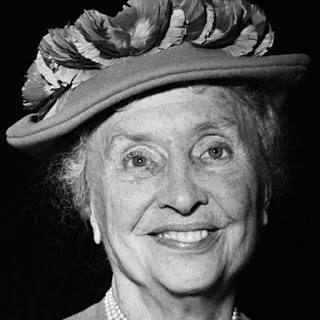
HELEN KELLER- EDUCATOR -
G'day folks,
American educator Helen Keller overcame the adversity of being blind and deaf to become one of the 20th century's leading humanitarians, as well as co-founder of the ACLU.
Synopsis
Helen Adams Keller was born on June 27, 1880 in Tuscumbia, Alabama. In 1882, she fell ill and was struck blind, deaf and mute. Beginning in 1887, Keller's teacher, Anne Sullivan, helped her make tremendous progress with her ability to communicate, and Keller went on to college, graduating in 1904. In 1920, Keller helped found the ACLU. During her lifetime, she received many honors in recognition of her accomplishments.
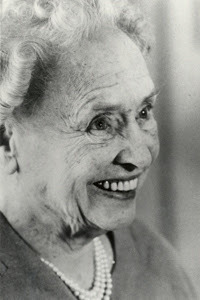
Helen Keller was the first of two daughters born to Arthur H. Keller and Katherine Adams Keller. She also had two older stepbrothers. Keller's father had proudly served as an officer in the Confederate Army during the Civil War. The family was not particularly wealthy and earned income from their cotton plantation. Later, Arthur became the editor of a weekly local newspaper, the North Alabamian.
Keller was born with her senses of sight and hearing, and started speaking when she was just 6 months old. She started walking at the age of 1.
In 1882, however, Keller contracted an illness—called "brain fever" by the family doctor—that produced a high body temperature. The true nature of the illness remains a mystery today, though some experts believe it might have been scarlet fever or meningitis. Within a few days after the fever broke, Keller's mother noticed that her daughter didn't show any reaction when the dinner bell was rung, or when a hand was waved in front of her face. Keller had lost both her sight and hearing. She was just 19 months old.
As Keller grew into childhood, she developed a limited method of communication with her companion, Martha Washington, the young daughter of the family cook. The two had created a type of sign language, and by the time Keller was 7, they had invented more than 60 signs to communicate with each other. But Keller had become very wild and unruly during this time. She would kick and scream when angry, and giggle uncontrollably when happy. She tormented Martha and inflicted raging tantrums on her parents. Many family relatives felt she should be institutionalized.

Educator Anne Sullivan
Looking for answers and inspiration, in 1886, Keller's mother came across a travelogue by Charles Dickens, American Notes. She read of the successful education of another deaf and blind child, Laura Bridgman, and soon dispatched Keller and her father to Baltimore, Maryland to see specialist Dr. J. Julian Chisolm. After examining Keller, Chisolm recommended that she see Alexander Graham Bell, the inventor of the telephone, who was working with deaf children at the time. Bell met with Keller and her parents, and suggested that they travel to the Perkins Institute for the Blind in Boston, Massachusetts. There, the family met with the school's director, Michael Anaganos. He suggested Helen work with one of the institute's most recent graduates, Anne Sullivan. And so began a 49-year relationship between teacher and pupil.
On March 3, 1887, Sullivan went to Keller's home in Alabama and immediately went to work. She began by teaching six year-old Helen finger spelling, starting with the word "doll," to help Keller understand the gift of a doll she had brought along. Other words would follow. At first, Keller was curious, then defiant, refusing to cooperate with Sullivan's instruction. When Keller did cooperate, Sullivan could tell that she wasn't making the connection between the objects and the letters spelled out in her hand. Sullivan kept working at it, forcing Helen to go through the regimen.
As Keller's frustration grew, the tantrums increased. Finally, Sullivan demanded that she and Keller be isolated from the rest of the family for a time, so that Keller could concentrate only on Sullivan's instruction. They moved to a cottage on the plantation.
In a dramatic struggle, Sullivan taught Keller the word "water"; she helped her make the connection between the object and the letters by taking Keller out to the water pump, and placing Keller's hand under the spout. While Sullivan moved the lever to flush cool water over Keller's hand, she spelled out the word w-a-t-e-r on Helen's other hand. Keller understood and repeated the word in Sullivan's hand. She then pounded the ground, demanding to know its "letter name." Sullivan followed her, spelling out the word into her hand. Keller moved to other objects with Sullivan in tow. By nightfall, she had learned 30 words.

In 1890, Keller began speech classes at the Horace Mann School for the Deaf in Boston. She would toil for 25 years to learn to speak so that others could understand her. From 1894 to 1896, she attended the Wright-Humason School for the Deaf in New York City. There, she worked on improving her communication skills and studied regular academic subjects.
Around this time, Keller became determined to attend college. In 1896, she attended the Cambridge School for Young Ladies, a preparatory school for women. As her story became known to the general public, Keller began to meet famous and influential people. One of them was the writer Mark Twain, who was very impressed with her. They became friends. Twain introduced her to his friend Henry H. Rogers, a Standard Oil executive. Rogers was so impressed with Keller's talent, drive and determination that he agreed to pay for her to attend Radcliffe College. There, she was accompanied by Sullivan, who sat by her side to interpret lectures and texts.
By this time, Keller had mastered several methods of communication, including touch-lip reading, Braille, speech, typing and finger-spelling. With the help of Sullivan and Sullivan's future husband, John Macy, Keller wrote her first book, The Story of My Life. It covered her transformation from childhood to 21-year-old college student. Keller graduated, cum laude, from Radcliffe in 1904, at the age of 24.
In 1905, Sullivan married John Macy, an instructor at Harvard University, a social critic and a prominent socialist. After the marriage, Sullivan continued to be Keller's guide and mentor. When Keller went to live with the Macys, they both initially gave Keller their undivided attention. Gradually, however, Anne and John became distant to each other, as Anne's devotion to Keller continued unabated. After several years, they separated, though were never divorced.
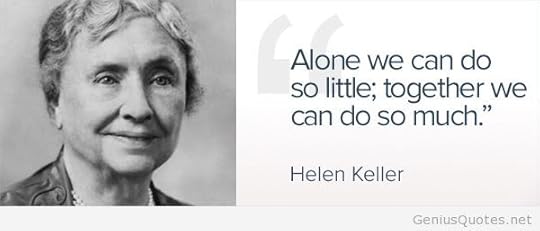
Social Activism After college, Keller set out to learn more about the world and how she could help improve the lives of others. News of her story spread beyond Massachusetts and New England. She became a well-known celebrity and lecturer by sharing her experiences with audiences, and working on behalf of others living with disabilities. Throughout the first half of the 20th century, Keller tackled social and political issues, including women's suffrage, pacifism and birth control. She testified before Congress, strongly advocating to improve the welfare of blind people. In 1915, along with renowned city planner George Kessler, she co-founded Helen Keller International to combat the causes and consequences of blindness and malnutrition. In 1920, she helped found the American Civil Liberties Union.
When the American Federation for the Blind was established in 1921, Keller had an effective national outlet for her efforts. She became a member in 1924, and participated in many campaigns to raise awareness, money and support for the blind. She also joined other organizations dedicated to helping those less fortunate, including the Permanent Blind War Relief Fund (later called the American Braille Press).
Soon after she graduated from college, Keller became a member of the Socialist Party, most likely due in part to her friendship with John Macy. Between 1909 and 1921, she wrote several articles about socialism and supported Eugene Debs, a Socialist Party presidential candidate. Her series of essays on socialism, entitled "Out of the Dark," described her views on socialism and world affairs.
It was during this time that Keller first experienced public prejudice about her disabilities. For most of her life, the press had been overwhelmingly supportive of her, praising her courage and intelligence. But after she expressed her socialist views, some criticized her by calling attention to her disabilities. One newspaper, the Brooklyn Eagle, wrote that her "mistakes sprung out of the manifest limitations of her development."

In 1936, Keller's beloved teacher and devoted companion, Anne Sullivan, died. She had experienced health problems for several years and, in 1932, lost her eyesight completely. A young woman named Polly Thompson, who had begun working as a secretary for Keller and Sullivan in 1914, became Keller's constant companion upon Sullivan's death.
In 1946, Keller was appointed counselor of international relations for the American Foundation of Overseas Blind. Between 1946 and 1957, she traveled to 35 countries on five continents. In 1955, at age 75, Keller embarked on the longest and most grueling trip of her life: a 40,000-mile, five-month trek across Asia. Through her many speeches and appearances, she brought inspiration and encouragement to millions of people.
Keller's autobiography, The Story of My Life, was used as the basis for 1957 television drama The Miracle Worker. In 1959, the story was developed into a Broadway play of the same title, starring Patty Duke as Keller and Anne Bancroft as Sullivan. The two actresses also performed those roles in the 1962 award-winning film version of the play.

Keller suffered a series of strokes in 1961, and spent the remaining years of her life at her home in Connecticut. During her lifetime, she received many honors in recognition of her accomplishments, including the Theodore Roosevelt Distinguished Service Medal in 1936, the Presidential Medal of Freedom in 1964, and election to the Women's Hall of Fame in 1965. She also received honorary doctoral degrees from Temple University and Harvard University and from the universities of Glasgow, Scotland; Berlin, Germany; Delhi, India; and Witwatersrand in Johannesburg, South Africa. Additionally, she was named an Honorary Fellow of the Educational Institute of Scotland.
Keller died in her sleep on June 1, 1968, just a few weeks before her 88th birthday. During her remarkable life, Keller stood as a powerful example of how determination, hard work, and imagination can allow an individual to triumph over adversity. By overcoming difficult conditions with a great deal of persistence, she grew into a respected and world-renowned activist who labored for the betterment of others.

Clancy's comment: Again, I am pleased to present another woman of substance on this blog. So many were high achievers for their time.
I'm ...


Published on April 03, 2016 16:06
April 2, 2016
3 April 2016 - BLACK YOUTH & CIVIL RIGHTS
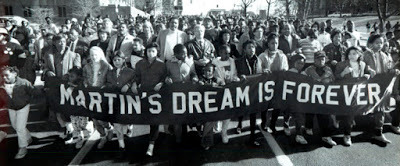
BLACK YOUTH& CIVIL RIGHTS
G'day folks,
The Civil Rights Movement drew many young people into a maelstrom of meetings, marches, imprisonment, and in some cases, death. Some were willing, active participants who took action for a cause they believed in. Others were unsuspecting victims of an oppressive, racist culture that was determined to perpetuate a white supremacist society.
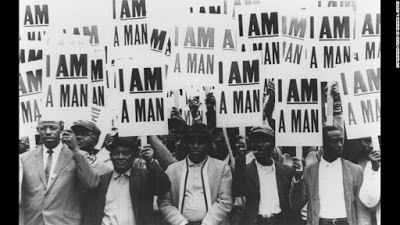
EMMETT TILL
In the summer of 1955, 14-year-old Emmett Till had just finished the seventh grade in Chicago. He had convinced his mother, Mamie, to forgo a planned family vacation and allow him to visit his great-uncle, Moses Wright, in Tallahatchie County, Mississippi. Mamie knew Emmett to be a responsible child, but also high spirited and at times, a prankster. Before he left, Mamie counseled Emmett to be polite and not provoke the white people. She gave him a ring that had belonged to his deceased father, Louis Till.
Tallahatchie County in 1955 was economically and cultural depressed area of northern Mississippi. Most of the population had only a grade school education. Two-thirds were African American, working as sharecroppers and subjugated by whites in every way. The 1954 landmark U.S. Supreme Court decision Brown v. Board of Education of Topeka Kansas, which outlawed segregation in public schools, was viewed as a death knell by most whites in the Deep South and Mississippi in particular. Many feared mixing of the races would encourage African Americans to step out of “their place” and threaten the social order. One state newspaper boldly declared, “Mississippi cannot and will not try to abide by such a decision.”
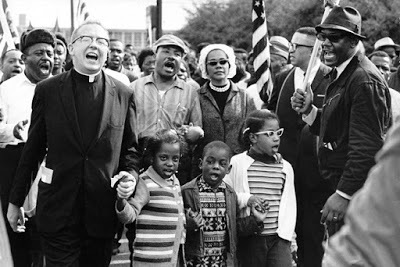
Emmett Till arrived at his great-uncle Moses farm house on August 21, 1955. He spent most of his days working in the cotton fields and his evenings with his cousins. He wasn’t conditioned, as they were, to address white people as “sir’ or “ma’am.” He boasted about his white friends in Chicago and a photo of a white girl he kept in his wallet whom he called his girlfriend. On the evening of August 24, Till and some cousins traveled to Money, a small junction near his great-uncle’s house. They gathered at Bryant’s Grocery and Meat Market owned and operated by a white couple, Roy and Carolyn Bryant. Roy was away on business, and 21-year-old Carolyn was minding the store. What happened next has been in dispute ever since.
Emmett Till either began to brag about his white girlfriend or someone dared him to go into the store and ask Carolyn Bryant for date. As he entered the store, his cousins looked in from the window. Some witnesses said he walked up to Carolyn, said something and touched or held her hand or arm. Others say he didn’t. Till either calmly left the store or was dragged out by one of his cousins. On the way to the truck, he allegedly yelled “Bye, baby” to Carolyn and either whistled loudly at her or, as his mother later explained he often did, whistled as he tried to overcome his stutter. In any event, the teenagers sped off before Carolyn could get her gun, which she kept under the seat of her car.
Carolyn chose not to tell Roy of the encounter with Till after he returned home, but he found out through local gossip and became enraged. In the early morning hours of August 28, Bryant and his half-brother John Milam stormed into Moses Wight’s house, pulled Till out of bed, and dragged him to an awaiting pickup truck. Wright and his wife fruitlessly pleaded with the men as they drove off into the night.
Three days later, Emmet Till’s body was recovered from the Tallahatchie River, mutilated beyond recognition. Moses Wright only knew it was his nephew because of the ring he was wearing. Authorities wanted to quickly bury the body, but his mother, Mamie insisted it be sent back to Chicago. After seeing her son’s remains, she decided to have an open-casket funeral so the world could see what had happened. Thousands of mourners filed passed the casket and several African American publications printed graphic photos of Till’s body.
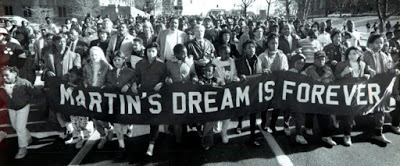
By the time of the trial, Emmett Till’s murder had become a source of outrage throughout the country and in Tallahatchie County. Roy Bryant and John Milam were charged with kidnapping and murder. Among the many witnesses called during the five-day trial was Moses Wright who bravely testified that Bryant and Milan kidnapped Till. It took the all-white, all-male jury only an hour to acquit Bryant and Milam.
After the verdict, protest rallies took place in major U.S. cities and even press in Europe covered the trial and after events. The Bryant’s store eventually went out of business, as 90 percent of their clientele was African American. Desperate for money, Bryant and Milam agreed to an interview by LOOK magazine where they gave detailed confessions about killing Till, secure from further prosecution because of double jeopardy.
Emmett Till’s murder brought light to the brutality of Jim Crow segregation in the South and galvanized an emerging civil rights movement. Two years after Emmett Till’s murder, nine brave African American high school students would break segregation tradition and enter a white-only high school.
Three years after that, a very brave seven-year-old African American girl would enroll in an all-white grade school and four African American college students would integrate lunch counters and start integration movement that would sweep the country. In 1963, two more events in Birmingham, Alabama—a police attack on thousands of children and the bombing of an African American church, killing four young girls—would stir the conscience of a nation to finally enact civil rights legislation into law.
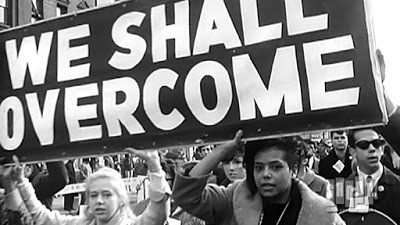
LITTLE ROCK 9 – 1957
The landmark 1954 U.S. Supreme Court decision Brown v. Board of Education set in motion the racial integration of the nation’s schools. Resistance was wide spread across the country and in 1955 the Court issued a second opinion (sometimes known as “Brown II”) ordering school districts to integrate “with all deliberate speed.” In response to the Brown decisions and pressure from the NAACP, the Little Rock, Arkansas, school board adopted a plan for gradual integration, beginning with Little Rock Central High School.
In the summer of 1957, Daisy Bates, president of the Arkansas NAACP, recruited nine high school students who she believed possessed the strength and determination to face the resistance to integration. They were Minnijean Brown, Elizabeth Eckford, Ernest Green, Thelma Mothershed, Melba Patillo, Gloria Ray, Terrence Roberts, Jefferson Thomas, and Carlotta Walls. In the months prior to the start of the school year, the students participated in intensive counseling sessions on what to expect and how to respond.
Two days before school opened, on September 2, 1957, Arkansas Governor Orval Faubus ordered the National Guard to bar African American students from entry to the state’s schools, stating it was “for their own protection.” The next day, federal court judge Richard Davies issued a counter-ruling that desegregation would proceed.
As the nine African American students attempted to enter the school on September 4, a crowd of angry white students and adults, and the National Guard, were there to meet them. As the students walked toward the front door, the white protesters drew closer, screaming racial epithets and spitting on them. Ultimately the Guard prevented the students from entering the school.
In the days that followed, the Little Rock school board condemned the governor’s National Guard deployment and President Dwight Eisenhower tried to persuade Governor Faubus not to defy the Court’s ruling. On September 20, Judge Davies ordered the National Guard removed from the school and the Little Rock Police Department took over to maintain order. Three days later, the police attempted to escort the students to school but were met by an angry mob of 1,000 white protesters. Little Rock mayor Woodrow Wilson Mann, asked President Eisenhower to send federal troops to enforce integration and on September 24, President Eisenhower ordered the 101st Airborne Division to Little Rock and federalized the entire 10,000 member of the Arkansas National Guard, taking authority away from Governor Faubus.
The next day, the Army troops escorted the students to their first day of class. Legal challenges and protests to integration continued and the 101st Airborne Division stayed at the school the entire year. The nine African American students faced verbal and physical abuse. Melba Pattillo had acid thrown in her face and Gloria Ray was thrown down a flight of stairs. In May, 1958, senior Ernest Green became the first African American to graduate from Central High School. The next year, Little Rock Central High School was closed after local citizens rejected by a 3-1 margin a petition to officially integrate the school. The school reopened in 1959 and the remaining Little Rock Nine students went on to graduate and have distinguished careers in government, the military, and the media. In 1999, President Bill Clinton recognized the nine for their significant role in civil rights history, awarding each the Congressional Gold Medal and in 2009, all nine were invited to President Barack Obama’s first inauguration.
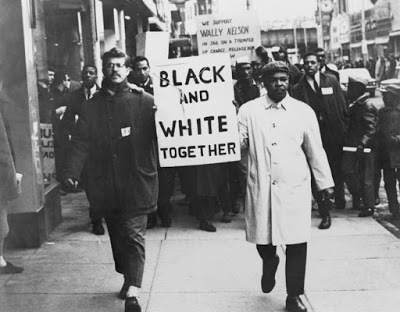
THE GREENSBORO FOUR, 1960
Despite the Brown v. Board of Education decision, desegregation in the South came slowly and painfully and young African Americans were keenly aware of the hypocrisy. In 1960, four African American college students–Ezell Blair Jr., David Richmond, Franklin McCain and Joseph McNeil–were attending the North Carolina Agricultural and Technical College. They had become close friends, spending evenings discussing current events and their place as African Americans in a “separate but equal” society. They had been influenced by the non-violent protest techniques of India’s Mohandas Gandhi as well as the early Freedom Rides in the Deep South, organized by the Congress for Racial Equality (CORE). They all four had been shaken by the 1955 murder of Emmett Till.
Though all four students recognized that some strides had been made in desegregating the South, integration was not universal. Most businesses were privately owned and thus not subject to federal laws that banned segregation. When one of the students had been denied service at a lunch counter, all four of them carefully devised a plan to take action and encourage change.
Wearing their best clothes, all four students walked into the F.W. Woolworth store in Greensboro, North Carolina on February 1, 1960. After purchasing some merchandise, they sat at the whites-only lunch counter and requested service which they were denied. They politely requested service and again were denied, this time by the store’s manager who told them to leave. Again, they refused. By this time, the police had arrived as did the media. Unable to take any action because there was no provocation, the police could not make an arrest. Customers in the store were dumbfounded at the situation, but did nothing. The four students stayed at the counter, unserved, until the store closed. They would be back.
By February 5, hundreds of students had joined the sit-in at Woolworth’s paralyzing the lunch counter business. Intense media coverage on television and newspapers showed many of the protesters stoically facing abuse and threats by white customers. The sit-ins sparked a nationwide movement on college campuses and cities bringing attention to the struggle for civil rights. By the end of 1960, many restaurants, lunch counters, and privately-owned businesses had desegregated their facilities without any court action or legislation. The sit-ins proved to be one of the most effective protests of the Civil Rights Movement.

Clancy's comment: Good for them!
I'm ...


Published on April 02, 2016 15:35
April 1, 2016
2 April 2016 - BOBBY FISCHER
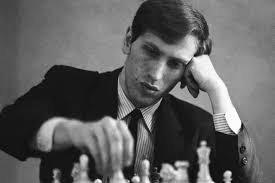
BOBBY FISCHER
G'day folks,
Welcome to the world of a chess player. Robert James "Bobby" Fischer was an American chess Grandmaster and the eleventh World Chess Champion. Many consider him the greatest chess player of all time. At age 13, Fischer won a "brilliancy" that became known as "The Game of the Century".
Bobby Fischer was a record-setting chess master who became the youngest player to win the U.S. Chess Championship at 14, and the first American-born player to win the World Chess Championship.
“Chess is life.”
—Bobby Fischer
Bobby Fischer was born on March 9, 1943, in Chicago, Illinois. Fischer first learned the game of chess at age 6 and eventually became the youngest international grand master at the age of 15. In 1972, he became the first American-born world chess champion after defeating Boris Spassky. An eccentric genius, who was believed to have an I.Q. of 181, Fischer became known for his controversial public remarks in his later years. He was granted Icelandic citizenship in 2005, following legal trouble with the United States. He died on January 17, 2008.
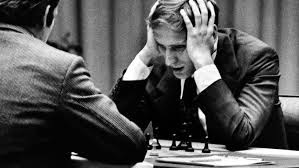
Early Life
A brilliant, highly competitive player who lost himself in the game, Fischer earned a place in the record books at age 14 when he became the youngest player to win the U.S. Chess Championship. Then in 1958, at 15, he became the youngest international grand master in history by winning the related tournament in Portoroz, Yugoslavia (now Slovenia).
During the early 1960s, Fischer continued to be involved in U.S. and world championship matches, but was also making a name for himself with his erratic, paranoid commentary. After having a 20-game winning streak in the early 1970s, Fischer once again made chess history in 1972 with his defeat of the Soviet Union's Boris Spassky at the Reykjavik, Iceland world championships, thus marking the first time an American chess player had won the title. Fischer's defeat of a Soviet opponent, which became known as the "Match of the Century," took on iconic proportions in the midst of the Cold War and was seen as a symbolic victory of democracy over Communism.
Fischer's historic win also made chess a popular game in the United States.
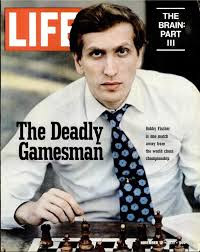
Controversial Figure
Despite his global popularity, Fischer's controversial behavior continued to make headlines. In the mid-1970s he refused to play Anatoly Karpov, the challenger to his title, and was thus stripped of his championship by the International Chess Federation. Fischer was reportedly homeless for a time in the Los Angeles area, becoming involved with a fringe church. He also became known for making anti-Semitic remarks despite the fact that his mother was Jewish.
In July 2004, Fischer was detained at a Japanese airport for trying to leave the country with an invalid passport and he was jailed for several months. He was eventually granted citizenship by Iceland and moved there in 2005.
Bobby Fischer died of kidney failure on January 17, 2008, in Reykjavík, Iceland. Miyoko Watai, a Japanese women's chess champion and general secretary of the Japanese Chess Federation, claimed that she had married Fischer in 2004, although the validity of their marriage was questioned. Another woman claimed that she had a daughter with Fischer. His body was exhumed to be DNA tested, and the claim of paternity was found to be false. In 2011, an Icelandic court ruled that Watai was Fischer's widow and the sole heir to his estate.

Books and Films on Fischer's Life
Several books and films have been made about Fischer's life and career. Fischer himself published works like Bobby Fischer Teaches Chess (1966) and My 60 Memorable Games (1969), while biographies on the icon include Endgame: Bobby Fischer's Remarkable Rise and Fall... by Frank Brady (2011), Fischer's childhood friend. The documentary Bobby Fischer Against the World, directed by Liz Garbus, was released in 2011.
Pawn Sacrifice, a film that focuses on Fischer's chess matches and the psychology of his troubled genius, premiered at the Toronto International Film Festival in September 2014 and was released in U.S. theaters a year later. Directed by Edward Zwick, actor Tobey Maguire played the role of Fischer, with Liev Schreiber portraying Spassky.

Clancy's comment: Can't say I've ever been inspired to play chess, but each to their own.
I'm ...


Published on April 01, 2016 17:12
March 31, 2016
1 April 2016 - CLANCY TUCKER PHOTOGRAPHY - KIDS

CLANCY TUCKER PHOTOGRAPHY- KIDS -
G'day guys,
This is part-one of a series of posts of photographs I took recently whilst overseas. Each post will feature a different subject. Today, I feature my favourite, but sometimes most difficult, subject - KIDS. In all of my travels I've become convinced of one thing. Kids are kids all over the world. They are also our greatest resource.






























Clancy's comment: Great kids, eh? These young ones were Chinese, Laotian, Thai, Vietnamese and Indonesian.
I'm ...
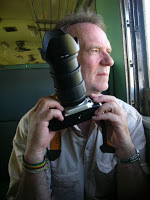

Published on March 31, 2016 15:41
March 30, 2016
31 March 2016 - SIR ISAAC NEWTON AND THAT APPLE

SIR ISAAC NEWTON AND THAT APPLE
G'day folks,
No doubt you have heard the story about Sir Isaac Newton and an apple that fell on his head? Mm ... Read on.
Sir Isaac Newton PRS was an English physicist and mathematician who is widely recognised as one of the most influential scientists of all time and as a key figure in the scientific revolution.
Legend has it that a young Isaac Newton was sitting under an apple tree when he was bonked on the head by a falling piece of fruit, a 17th-century “aha moment” that prompted him to suddenly come up with his law of gravity. In reality, things didn’t go down quite like that. Newton, the son of a farmer, was born in 1642 near Grantham, England, and entered Cambridge University in 1661. Four years later, following an outbreak of the bubonic plague, the school temporarily closed, forcing Newton to move back to his childhood home, Woolsthorpe Manor.

It was during this period at Woolsthorpe (Newton returned to Cambridge in 1667) that he was in the orchard there and witnessed an apple drop from a tree. There’s no evidence to suggest the fruit actually landed on his head, but Newton’s observation caused him to ponder why apples always fall straight to the ground (rather than sideways or upward) and helped inspired him to eventually develop his law of universal gravitation. In 1687, Newton first published this principle, which states that every body in the universe is attracted to every other body with a force that is directly proportional to the product of their masses and inversely proportional to the square of the distance between them, in his landmark work the “Principia,” which also features his three laws of motion.

In 1726, Newton shared the apple anecdote with William Stukeley, who included it in a biography, “Memoirs of Sir Isaac Newton’s Life,” published in 1752. According to Stukeley, “After dinner, the weather being warm, we went into the garden, & drank thea under the shade of some apple trees… he told me, he was just in the same situation, as when formerly, the notion of gravitation came into his mind…. occasion’d by the fall of an apple, as he sat in a contemplative mood.”

The esteemed mathematician and physicist died in 1727 and was buried at Westminster Abbey. His famous apple tree continues to grow at Woolsthorpe Manor.

Clancy's comment: I wonder if he actually liked apples?

Great review by John Campbell, movie maker:
Hello Clancy,
Today, I have just completed reading the fourth of your short stories you
gave me, complete with your personal signature. That alone impressed me heaps, but today I finished reading 'Kick Ass Tyler'. I started with 'Mr Rainbow', that was stunning enough, but it got better with 'KY', followed by 'Sheeza'. Now, as I say, it was the ultimate, 'Kick Ass Tyler'. All these books and their intriguing content, miraculously came from you incredible imagination. Like your previous works I have read, I was unable to put them down, postponing many of life's necessities, like sleeping and eating, just so I could continue reading. Another member of my crew, Jenni, said the same thing.
Clancy, to say I am impressed, fails to even describe my reactions. If I could find a word that described being totally gob-smacked with each of them, I would still would not even start to convey the feeling each one of them left with me. As those sad words "The End" appeared quite suddenly on the last page, I was left feeling empty, as if I had suddenly lost some very dear friends. "Oh! it's over". This is true magic, Clancy. Firstly to say that I know the Author personally, and then to have him agree to my directing a full length movie of one of them, is incredibly humbling. Your work, as I start the 'GH' marathon has given me an indescribable sense of confidence.
Lost for words, I sincerely thank you.
John.
Thanks, John. So, don't waste any time, folks. Head up to the top right-hand side of this post and buy a book ... Or two.
I'm ...


Published on March 30, 2016 15:16
March 29, 2016
30 March 2016 - OLD AGE

OLD AGE
G'day folks,
With all respect, here are some humorous slants on getting old. Sadly, some people are deprived of the opportunity.


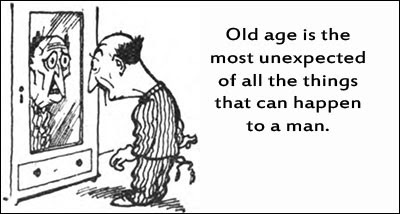


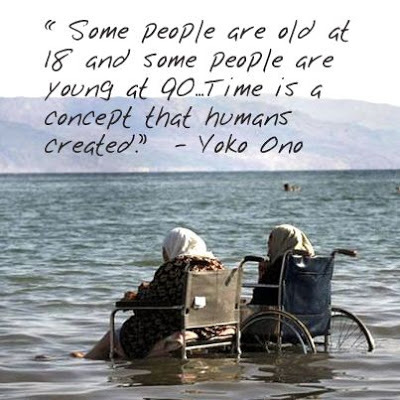


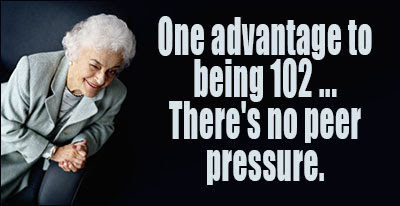
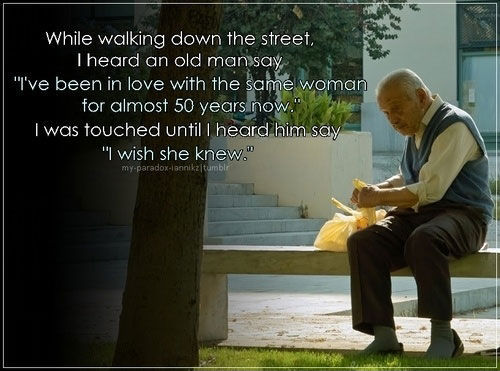






Clancy's comment: Live each days as if it is your last. Kick your heels up.
I'm ...


Published on March 29, 2016 15:39



